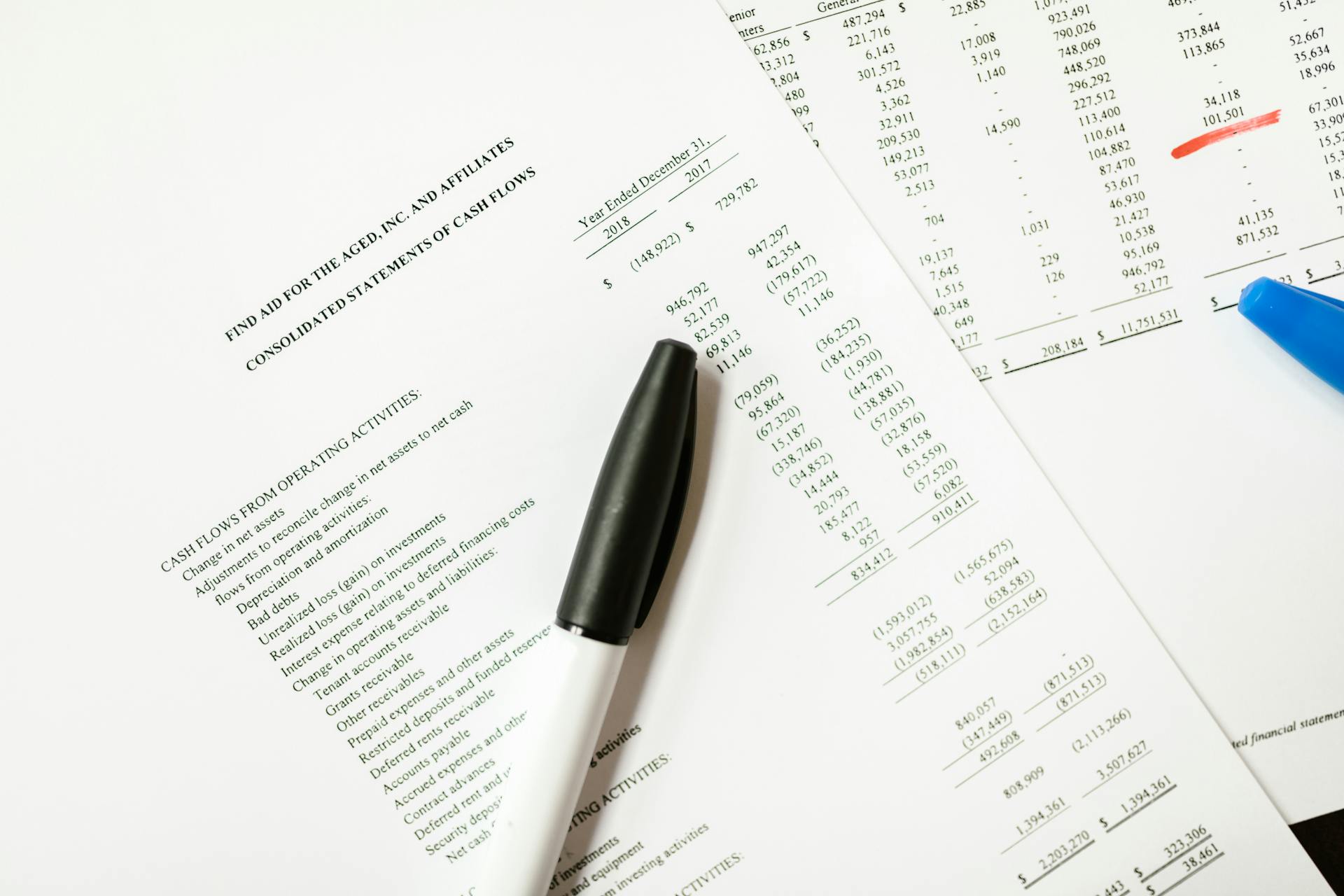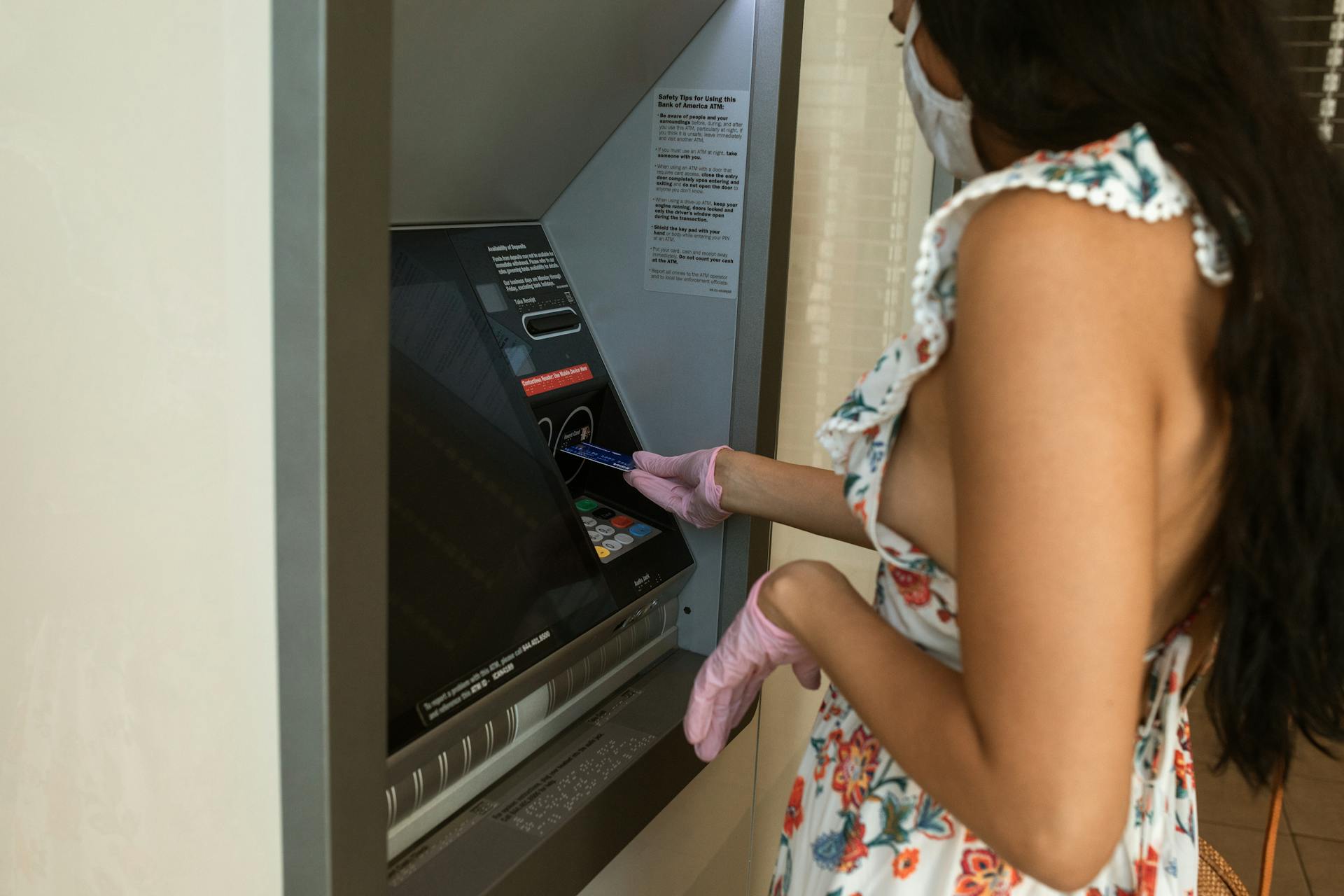
Cash flow forecasting is a crucial tool for businesses to manage their finances effectively. By accurately predicting inflows and outflows of cash, businesses can make informed decisions about investments, hiring, and expansion.
A well-planned cash flow forecast can help businesses avoid cash shortfalls and take advantage of opportunities. For instance, a company with a reliable cash flow forecast can invest in new equipment or hire additional staff when cash is available.
Regular cash flow forecasting also helps businesses to identify potential cash flow issues before they become major problems. This proactive approach enables businesses to make adjustments and mitigate the impact of cash flow shortfalls.
To create an effective cash flow forecast, businesses should consider factors such as sales projections, payment terms, and seasonal fluctuations.
Determine Your Objective(s)
Your cash flow forecast should support a specific business objective. You'll want to identify the purpose of your forecast to ensure it provides actionable insights.
Check this out: Forecast Period (finance)
Organizations most commonly use cash forecasts for short-term liquidity planning, managing the amount of cash available on a day-to-day basis to meet short-term obligations.
Interest and debt reduction is another common objective, ensuring the business has enough cash on hand to make payments on loans or debt.
You may also want to project cash levels for key reporting dates, such as year, quarter, or month-end, for covenant and key date visibility.
Liquidity risk management is also a crucial objective, creating visibility into potential liquidity issues that could arise in the future.
Growth planning is another important objective, ensuring the business has enough working capital on hand to fund activities that will help grow revenues in the future.
Here are some common objectives of a cash flow forecast:
- Ensuring that your company can avoid cash shortfalls much earlier;
- Better plot cash outflows such as salaries and supplier payments;
- Track the amount of cash inflowing and outflowing through your business;
- Estimate the cash on hand you'll need to run your business effectively in the short term;
- Make more informed decisions around business growth, financing and investments;
- Creating and monitoring your budgets;
- Banks and other finance lenders may require a cash flow forecast when applying for more funding.
Choosing a Period
The length of your cash flow forecast can make a big impact on its accuracy and reliability. Generally, the further into the future the forecast looks, the less detailed or accurate it's likely to be.
There's a trade-off between the availability of information and forecast duration. Choosing the right reporting period is crucial to ensure your forecast meets your business needs.
Short-term forecasts typically look two to four weeks into the future and are best suited for short-term liquidity planning. This level of granularity is important to ensure a business can meet its financial obligations.
Medium-term forecasts, on the other hand, look two to six months into the future and are useful for interest and debt reduction, liquidity risk management, and key date visibility. A common medium-term forecast is the rolling 13-week cash flow forecast.
Long-term forecasts typically look 6–12 months into the future and are often the starting point for annual budgeting processes. They're also an important tool for assessing the cash required for long-term growth strategies and capital projects.
Mixed-period forecasts use a mix of the three periods above and are commonly used for liquidity risk management. For example, a mixed period forecast may provide weekly forecasts for the first three months and then on a month-to-month basis for the next six months after that.
Here are the forecasting periods we recommend and the business objectives they're best suited for:
Choosing a Method
Direct forecasting is the most accurate method, but it's often unreliable for reporting periods longer than 90 days due to limited actual cash flow data availability.
There are two primary types of forecasting methods: direct and indirect. Direct forecasting uses actual flow data, while indirect forecasting relies on projected balance sheets and income statements.
The right forecasting method depends on the cash flow forecasting window and the data you have available to build your model. Generally speaking, direct forecasting provides the greatest accuracy.
If this caught your attention, see: The Direct Method of Reporting Operating Cash Flows
Choose a Method
Direct forecasting uses actual flow data, which is often the most accurate method.
However, this method can be unreliable for reporting periods longer than 90 days because actual cash flow data isn't always available beyond that window.
You have two primary types of forecasting methods to choose from: direct and indirect.
Direct forecasting is generally the most effective method, but it depends on the data you have available to build your forecasting model.
A different take: Direct Cash Flow Statement Example
Three-Way Projection
A three-way projection is essentially a combination of three reports: cash flow statements, profit and loss, and balance sheet forecasts. This comprehensive approach helps you predict future cash shortages, expected profitability, and what your business owns and owes.
A cash flow statement will give you a closer look at your business's cash flow, while a profit and loss statement will show you your expected profitability compared to the previous period. This includes revenue, cost of goods and services, and net profit.
A three-way projection is vital to the future planning of your business, as you'll be able to use different scenarios to create a more comprehensive understanding of what may happen to your business over the coming few years. This will give you a better understanding of what works well and what needs to be tweaked.
Here are the three components of a three-way projection:
- Cash flow statements
- Profit and loss
- Balance sheet forecasts
By combining these three reports, you'll get a complete picture of your business's financial situation, allowing you to make informed decisions and adjust your strategy as needed.
Financial Data
To create a cash flow forecast, you need to source the right data, which can be found in bank accounts, accounts payable, accounts receivable, or accounting software. Most businesses manage their finances through these systems, making it easier to pull the necessary information.
You'll want to focus on pulling your opening cash balance for the forecasting period, which is usually the most up-to-date and accurate reflection of current positions. This is a crucial starting point for your forecast.
Other data to consider pulling includes cash inflows and outflows for the forecasting period. Cash inflows can come from sales receipts, intercompany funding, dividend income, proceeds of divestments, and inflows from third parties. You should also capture cash outflows such as wages and salaries, rent, investments, bank charges, and debt payments.
To make your forecast more accurate, consider the following factors:
- Your customer base and how quickly they pay you
- Changes in the economy such as interest rates and unemployment rates
- What your competitors are doing
Here's a summary of the key data points to pull:
- Opening cash balance
- Cash inflows (sales receipts, intercompany funding, dividend income, proceeds of divestments, and inflows from third parties)
- Cash outflows (wages and salaries, rent, investments, bank charges, and debt payments)
Creating a Forecast
Creating a forecast is a crucial step in cash flow forecasting. You can start by choosing between two different methods: the direct forecasting method, which is useful for short-term forecasting based on future cash inflow and outflow, or the indirect forecasting method, which is used for long-term forecasting aligned with a business's goals and strategy.
Fathom uses the indirect cash forecasting method to help with long-term planning up to three years in the future. To get started, you can start from scratch to build a custom cash flow forecast, use the Quick Start Forecast, or link your cash flow forecast to an existing budget.
There are three ways to get started with Fathom's cash flow forecasting software. You can start from scratch, use the Quick Start Forecast, or link your cash flow forecast to an existing budget.
Here are the three ways to get started with Fathom's cash flow forecasting software:
- Start from scratch to build a custom cash flow forecast
- Quick Start Forecast, which will read as much of your source accounting data as possible and apply a linear regression to each account line
- Linking your cash flow forecast to an existing budget that you have imported into Fathom
Benefits and Importance
Cash flow forecasting is essential for every business, and its benefits can't be overstated. It helps you identify potential problems and make necessary changes to avoid cash deficits.
A cash flow forecast can predict months when you might experience a cash shortage, allowing you to plan for them by saving more in surplus months, stepping up receivables collection efforts, or establishing a line of credit with your bank.
Recommended read: Brk.b Outstanding Shares
Late payments and missing paychecks can damage your reputation with suppliers and employees. With a cash flow forecast, you can confirm that you'll be able to meet your payroll obligations and pay suppliers on time.
Cash flow forecasting has several benefits, including less stress about where your money will come from, the ability to identify problems and plan for times when you might be low on cash, and greater confidence paying your staff and suppliers on time.
Here are some of the key benefits of cash flow forecasting:
- Better planning: identifying and planning for when you may have a negative cash flow.
- Risk mitigation: detecting problems before they happen and doing something about them.
- Better relationships: having greater confidence to protect your relationships by paying your staff members and suppliers promptly.
- Greater financial control: taking control of your cash flow management and planning your spending and investments more effectively.
- Managing your debts: with an accurate cash flow projection, you'll better handle your debt obligations.
- Confidence from stakeholders: cash forecasting may be required by a bank, investors, and other stakeholders who need to assess the financial health of your business.
- Improving adaptability: with the flexibility of cash flow forecasting, your business will be better equipped to move into a more adaptable mindset regarding your future financial planning.
Cash flow forecasting also helps businesses get out of debt faster, ensures they adhere to debt covenants, and enables them to grow more predictably.
Challenges and Solutions
Cash flow forecasting can be a daunting task, especially when dealing with multiple countries and currencies. Forecasting can be an arduous and time-consuming process, particularly if it's based on spreadsheets and involves manual data collection.
This can result in errors, inconsistencies, and a lack of cooperation from internal stakeholders. Manual data collection processes may also run the risk of data inputting errors and inconsistencies.
For your interest: Debtor Collection Period
Companies can improve the data collection process and make use of technology to maximize the accuracy and timeliness of the resulting forecast. Sophisticated cash forecasting solutions can use both live and historical data on the company's payables and receivables, alongside technologies such as machine learning.
These solutions can provide fast and accurate near-real-time forecasts, taking into account not only current purchase orders, payables and receivables, but also behavioral patterns such as invoice approval times.
Here are some common challenges associated with cash flow forecasting:
- Time
- Errors
- Lack of co-operation from stakeholders
- Lack of forecasting tools
By addressing these challenges, companies can improve the accuracy and timeliness of their cash flow forecasts, and make more informed business decisions.
Challenges
Forecasts can be notoriously difficult to create, particularly if your business operates across multiple countries and currencies. Manual data collection can be a major time sink, taking several hours or even days to generate a single forecast.
Time-consuming forecasting processes can be a significant challenge, especially when relying on spreadsheets. The average time taken to generate a complete forecast in Excel can range from several hours to several days.
Intriguing read: Time Period Assumption Accounting
Manual data collection also increases the risk of errors and inconsistencies, which can be costly and time-consuming to rectify. Inconsistent data can lead to inaccurate forecasts, which can have serious consequences for your business.
Without sophisticated forecasting tools, the process can be unwieldy and prone to errors. This can lead to a lack of trust in the forecast, making it harder to make informed business decisions.
Here are some of the common challenges associated with forecasting:
- Time: Forecasting can be an arduous and time-consuming process.
- Errors: Manual data collection processes may also run the risk of data inputting errors and inconsistencies.
- Lack of co-operation from stakeholders: Internal stakeholders may fail to provide information on time or in the required format.
- Lack of forecasting tools: Without sophisticated tools available, this can be an unwieldy undertaking.
Solutions
Cash flow forecasting solutions can help companies forecast their future cash flows with greater accuracy.
Sophisticated cash forecasting solutions can use both live and historical data on the company's payables and receivables.
These solutions can take into account not only current purchase orders, payables and receivables, but also behavioral patterns such as invoice approval times.
Visualization tools can help companies understand the forecast quickly and easily.
Cash forecasting tools that integrate seamlessly with the company's ERP instances around the world can reduce the challenges associated with gathering information from disparate sources.
See what others are reading: Cash Flow Problems and Solutions
Frequently Asked Questions
How do you calculate forecasted cash flow?
To calculate forecasted cash flow, simply subtract projected expenses from projected revenues. This straightforward calculation helps businesses anticipate their net cash flow and make informed financial decisions.
What is a 3 year cash flow forecast?
A 3-year cash flow forecast is a financial plan that predicts a business's cash inflows and outflows over three years, considering factors like sales, expenses, and investments. It helps businesses anticipate and manage their financial future with accuracy and clarity.
What is the cash flow forecast activity?
A cash flow forecast is a 12-month prediction of a business' future cash inflows and outflows, crucial for new businesses and others to manage finances effectively. It helps businesses anticipate and prepare for upcoming cash needs and opportunities.
How to interpret a cash flow forecast?
To understand a cash flow forecast, look for the total positive or negative cash flow, which indicates whether your business will have enough cash to meet its financial obligations. This total is then added to the opening cash balance to estimate the closing cash balance at the end of the forecast period.
Sources
- https://www.cashanalytics.com/what-is-cash-flow-forecasting/
- https://taulia.com/glossary/what-is-cash-flow-forecasting/
- https://www.bench.co/blog/operations/cash-flow-forecasting
- https://business.vic.gov.au/business-information/finance/cash-flow/cash-flow-forecasting
- https://www.fathomhq.com/features/cash-flow-forecasting/what-is-cash-flow-forecasting
Featured Images: pexels.com

